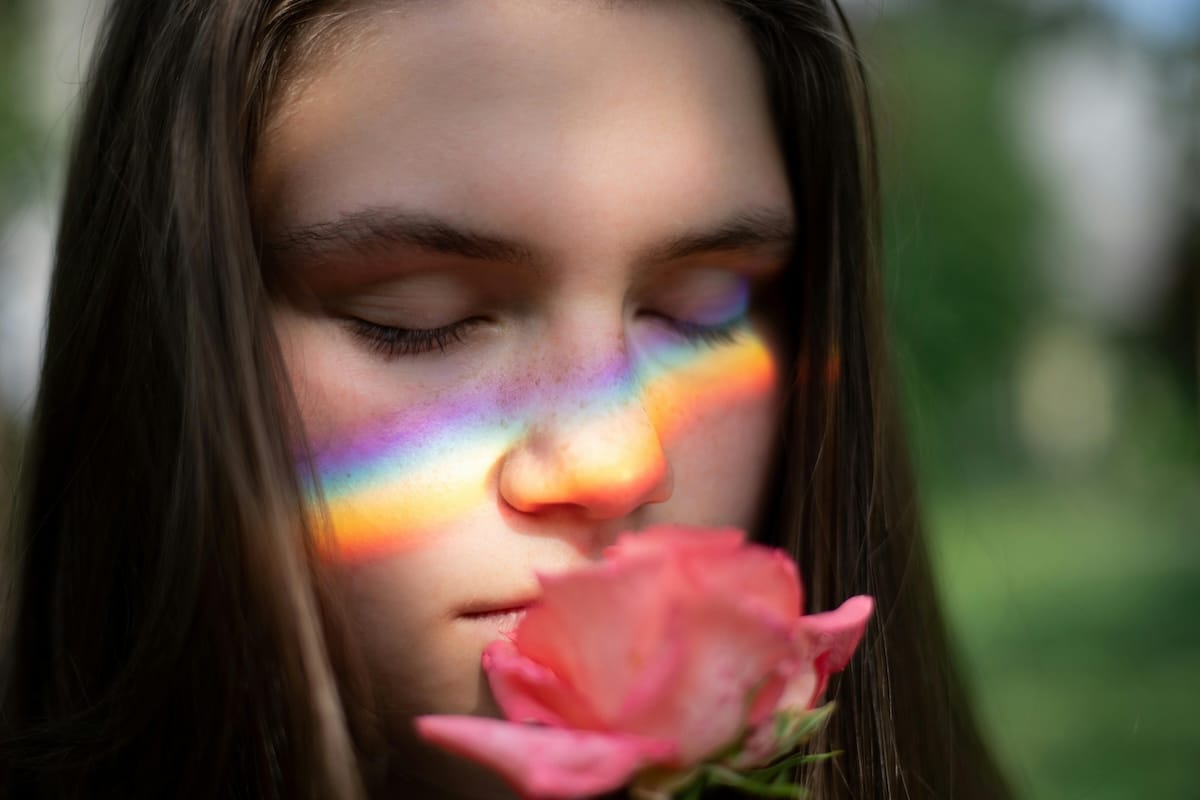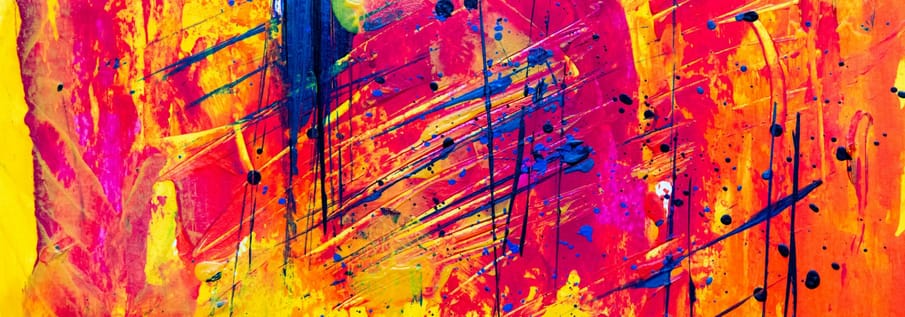History and culture open doors to a wonderful exploration of colour that can provide real-life therapy for the soul. We explore how to harness it for mood, mental health, and to enhance your creativity
When you think of the vast array of colours that compose the canvas of life, it’s hard not to feel deeply. A breathtaking landscape, a playfully vibrant home, wildflowers dancing in the breeze: these things offer a menagerie of fun for the senses.
Colour infuses every day of our lives, symbolising so much of the human experience, and sitting at the helm of joy and creativity. But, between rushing around and focusing so intently on the to-do list at hand, we can become short-sighted, and the spectrum of hues can go unnoticed as we miss the detail in that place, object, or person, that can provide a lift for the soul – if only we took the time to really look.
The benefits of appreciating the colours of life are right at our fingertips, and one way to grasp them is by taking an explorative dive into colour through culture. By deepening our awareness of it, we can form new ideas, and see the world through a brighter lens – providing a wonderful salve for our mental health, and a boost for creativity. Ready to begin?
Researchers estimate that most humans can actually see around one million different colours – quite the contrast to the seven shades of the rainbow we learn about as children! But, this is a gift we often take for granted in daily life, when taking a moment to be mindful, and really focus and appreciate the varying tones surrounding us could be truly awakening.
If you think about how you feel exploring a street market or strolling through a garden, chances are you’ll be uplifted, engaged, and alert to the world. So much more than a collection of hues, colour can shift us from one state to another – impacting mood, stress, and creativity, while also helping to form memories.
And there’s science to back this up. A study by Ravi Mehta and Rui (Juliet) Zhu in Science suggests that the colour red can enhance a person’s performance on a detail-oriented task, while blue is better for creative ones. And a study in the Malaysian Journal of Medical Sciences reviewed the impact of colour on memory performance, and found that higher contrast can help us recall better. Plus, research in the journal Color Research and Application from 2015 reports that there can be a physiological effect, with heart rates increasing with red and yellow, while blue improves relaxation.
Chances are there are some powerful associations already in play from your own experience. You might love orange for its ability to transport you back to chatting with friends in front of a fire, or the red of deckchairs that remind you of childhood holidays. Green might be your calm colour, while grey – stirring up unwelcome feelings – sits in the background, never to grace an item in your possession.
What’s interesting is that while we have personal associations with colours, there does appear to be a universal pattern of recognition as well. A 2020 study of more than 4,500 people from 30 countries, published in Psychological Science, found that 68% of people associate red with love, 52% connect yellow with joy, and 35% find relief in blue.
But by tuning-in to how different hues make us feel personally, we can embark on a colour journey that boosts our appreciation of colour, challenges pre-conceived notions, and creates new experiences that nurture us both mentally and emotionally.

Colour in culture and history
Did you know that the first colour used in art was red? That the first manmade pigment was Egyptian blue? Or in 1840, Queen Victoria shunned the conventional red gown for white, setting the wedding dress tradition we practise today?
Colour has been painting our world, informing opinion, and setting trends for centuries. And there is much we can learn from its use in history to enrich our experience of the world. Understanding how it’s been used to symbolise beliefs and traditions, for example, can help spark valuable conversations. Similarly, the use of colour in art and design is a great showcase for human creativity and innovation – encouraging us to ask questions, think differently, and discover alternate views.
It’s a good idea to challenge your notions of colour, too. You might have always hated orange, but through learning about the bright orange marigolds that symbolise sun, life, and positivity in Hindu cultures, suddenly start to see it in a fresh light.
By embracing the colours of the past, we can connect them to our present and future – tapping into our imagination and unleashing new ways to create beauty and meaning in our world.
Find inspiration in these five cultural events and places:
Start anew: Festival of Holi
Holi is a Hindu celebration that marks the beauty of life, and the promise of a fresh start. The key colours are red (for love and passion), yellow (vitality and healing), green (new beginnings and growth), blue (spiritual enlightenment), and pink (love and friendship). But most importantly, perhaps, is the social harmony and unity that the festival stands for, witnessed through the playful throwing of gulal (coloured powders) at friends, family, and strangers.
Get inspired: Bring elements of these colours and their meaning into your home and life. Dress in vibrant colours, grow something new to signify a fresh start, or use the deeper meaning of Holi as motivation to form connections with others.

Feel connected: Las Palmitas, Mexico
Dubbed the ‘first magical neighbourhood’, a Mexican collective called ‘The German Crew’ painted a colourful canvas across 200 homes in a part of rural Mexico experiencing poverty and crime. The project actively involved 452 local families, creating jobs, reducing crime, and proving that colour can restore the fabric of society.
Get inspired: Start a collective all of your own – kick off a community art project, find ways to inject colour into somebody’s life, and engage with artists and communities to share creative perspectives.
Find creativity and meaning: Cinque Terre
The Cinque Terre region in Italy is famous for its colourful coastal houses. It’s believed that the houses were painted brightly in fishermen’s choice of colour so they could identify them on their way back from sea, while the colourful towns reflect the welcoming spirit of the locals that live there.
Get inspired: Think about what colour means to you, and use it in your life and home to create purpose. If you adore green, bring it in via fashion, furnishings, or art. You could even paint your front door, just like the fishermen would’ve done!
Feel uplifted: Mardi Gras
Famed for its carnival spirit, Mardi Gras is celebrated between January and the night before Ash Wednesday, and is most commonly associated with New Orleans. The famous beads and colours of Mardi Gras adorning the city – gold for power, purple for justice, and green for faith – are inspired by events from 1872 when a visiting foreign dignitary, Grand Duke Alexei Alexandrovich Romanov, had his welcoming committee hand out beads in these shades, evoking a wonderful sense of joy.
Get inspired: Music, a Mardi Gras menu, accessories, and fun get-togethers are a wonderful way to experience the excitement of Mardi Gras.
Feel at peace: Claude Monet’s Garden
The flowering vines and wild greenery of Monet’s garden in Giverny, northern France, are a dreamscape for colour-seekers looking to reconnect with nature. The rambling roses, weeping willows, and fruit trees, are an enchanting backdrop to Monet’s pink stucco house, and is the setting that inspired his most iconic pieces of work.
Get inspired: Visit open gardens close to home, get creative with a Monet-style planting in your own back yard, or have a go at painting the view from your window.

Whether you source it from art, fashion, architecture, nature, or the very depths of history, colour has the power to provide serious inspiration in life, bringing a fresh perspective, new ideas, and a positive outlook. So go for it – read, research, experiment, travel, and eat your way into a world of colour! Who knows what you’ll find at the end of that rainbow?


Comments